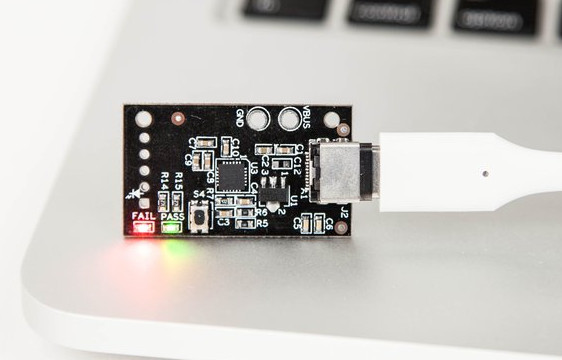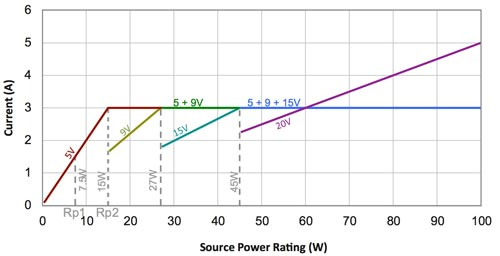USB power delivery allows for up to 100W charging using 20V @ 5A through a USB type C port, and the specifications also mandate supports for various voltages between 5V and 20V. However, some USB-C power adapter that not be fully compliant with the specifications, potentially risking to damage your device. USBCEE Tiny-PAT board has been created in order to test such power adapters to make sure they are compliant with USB PD 2.0/3.0 specifications.
 Tiny-PAT board features and specifications:
Tiny-PAT board features and specifications:
- Supported USB Spec Version – PD 2.0 / PD 3.0
- Max Voltage: 24 V
- Max Current: 5 A
- Max Power: 100 W
- USB type C receptacle
- Misc – Fail and Pass LEDS, S4 mode button, through holes for VBUS & GND
- Power Consumption: ~10 mA (may vary based on voltage)
- Dimensions – 35 x 20 mm
By default, the board will test all power rules advertised by the power adapter, measure the voltage (VBUS), and show whether the test failed or passed with the LEDs on the board.

S4 button is used to switch to manual mode, where you can switch between each power rule, and verify the voltage(s) with a multimeter, external load, or oscilloscope. In that mode, Tiny-PAT could also be used a variable power supply where you can for example, select 5 V/3 A, 9 V/3 A, 15 V/3 A or 20 V/4.35 A with Apple’s 87 W USB-C power adapter, or 5 V/3 A, 7 V/3 A, 8 V/3 A, 9 V/2.7 A, or 12 V/2 A with Verizon USB charger. The company promises to release schematics under an open license.
USBCEE has launched a CrowdSupply campaign to raise some funds for mass production of the board. A pledge of $40 should get you a Tiny-PAT board shipped at the end of November. Shipping is free to the US, and adds $7 to the rest of the world.

Jean-Luc started CNX Software in 2010 as a part-time endeavor, before quitting his job as a software engineering manager, and starting to write daily news, and reviews full time later in 2011.
Support CNX Software! Donate via cryptocurrencies, become a Patron on Patreon, or purchase goods on Amazon or Aliexpress




